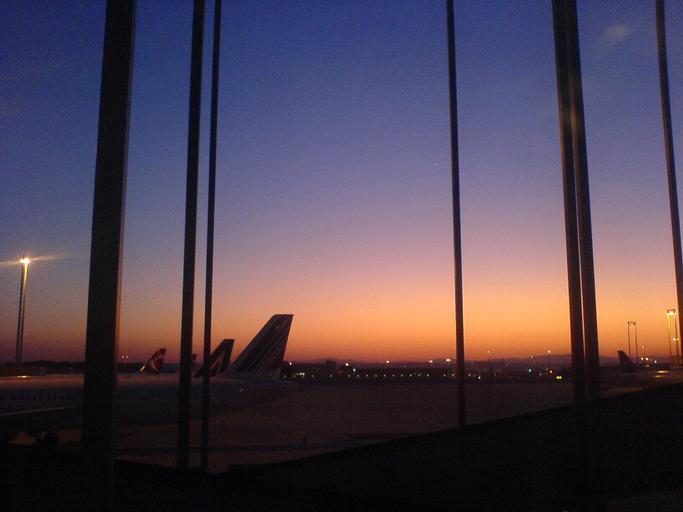Introduction to Moody Aesthetics in Photography
Photography, as an art form, has the unique ability to encapsulate fleeting moments and evoke profound emotions. Among the myriad styles that photographers adopt, moody aesthetics stands out for its captivating allure. This approach often thrives on the interplay of light and shadow, creating images that resonate with viewers on a deeper emotional level. In this expansive article, we will explore the dimensions of moody aesthetics through various themes such as liminal spaces, urban decay, and atmospheric portraits.

Exploring Liminal Worlds in Photography
Liminal spaces are transitional or transformative areas that exist between two states of being. In photography, these can be represented through locations like abandoned buildings, tunnels, or empty streets at twilight. The concept of the liminal world in photography invites viewers to contemplate their own journeys through these spaces.
Defining Liminality: An Artistic Perspective
What does it mean to be in a liminal space? Simply put, it's a state of transition—a time when one is neither here nor there. From an artistic perspective, capturing this essence can create powerful narratives within a single frame. Photographers often use techniques such as abstract forms and subtle contrast to emphasize this idea.
Examples of Liminal Spaces
- Tunnels: Often characterized by their dark walls and mysterious ambiance, tunnels serve as perfect metaphors for journeys both physical and existential. Forgotten Spaces: Urban decay presents visual storytelling opportunities; peeling paint and aged surfaces tell tales long lost to time. Transitional Zones: Parks at dusk or vacant lots during sunrise exemplify how light transforms ordinary environments into evocative landscapes.
The Intrigue of Tunnel Photography
Tunnel photography embodies a unique genre that captures the essence of darkness while hinting at potential discovery beyond the shadows.
Creating Atmosphere Through Composition
In tunnel photography, composition plays a pivotal role. Photographers must consider not only their subject but also how they frame http://inspirevault663.theglensecret.com/personalizing-your-environment-through-custom-wall-art-creations the surrounding elements—often manipulating depth of field to lead the viewer's eye deeper into the scene.
Techniques for Capturing Tunnel Scenes
Backlit Subjects: Placing subjects against light sources creates striking silhouettes that enhance mystery. Reflective Surfaces: Utilizing wet textures in photography allows puddles to reflect light dramatically. Round Tunnels: The circular shape naturally draws attention inward, making it an ideal setting for exploration.Self-Portraits: A Journey Within
The self-portrait is more than just a photograph; it’s an introspective journey that invites viewers to connect with the artist's inner world.
Crafting Mood Through Self-Portraits
A self-portrait can convey various emotions depending on its execution—whether showcasing a solitary figure in shadow or an enigmatic figure adorned in a long coat and hat.
Tips for Effective Self-Portraiture
Maintain an introspective mood by choosing settings that amplify your feelings. Experiment with angles; sometimes shooting from below can create a sense of drama. Incorporate props like hats or coats that add character to your image while enhancing narrative depth.Murky Tones vs Earthly Hues in Photography
Color plays an essential role in establishing mood within photography; murky tones often evoke feelings of melancholy while earthy hues offer warmth and grounding.
The Use of Murky Tones
Murky tones can add layers of complexity to photographs—think foggy mornings or overcast skies where colors blend seamlessly into each other.
Impact on Visual Storytelling
Using murky tones can create an eerie stillness within your work—a haunting beauty that lingers in viewers' minds long after they've seen it.
Embracing Earthly Hues
In contrast, earthy hues bring vibrancy without sacrificing depth. Rich browns and greens can evoke nostalgia while still maintaining modern sensibilities.
Creating Atmospheric Portraits
Atmospheric portrait photography melds human emotion with environmental context—it tells stories beyond mere appearance by integrating surroundings into the subject's narrative.
Crafting Immersive Compositions
To create an immersive composition:
- Utilize shadow and light strategically; allow natural light to flood certain areas while keeping others obscured. Place your subject within contemplative spaces—such as old libraries or dimly lit cafes—to enhance emotional resonance.
Visual Storytelling Through Shadows and Light
Photography is fundamentally about capturing light—and shadows tell equally compelling stories left untold by brightness alone.
The Dance Between Shadow and Light
Shadows can create layers within photographs that invite contemplation; they reveal unseen worlds lurking just outside our perception yet remain central to understanding our environment.
Capturing Shadowy Reflections
Photographing reflective puddles offers dual perspectives—allowing you to explore both your subject’s reality and its mirror image simultaneously adds complexity to visual storytelling.

Mystical Ambiance: Creating Ethereal Images
Ethereal atmosphere envelops images in mystique; this quality invites viewers into otherworldly realms captured through deliberate photographic choices like soft focus or low-light conditions.
Techniques for Ethereal Photography
Use soft lenses or filters to achieve dreamy effects. Incorporate backlighting techniques for subjects set against bright backgrounds. Embrace twilight tones which introduce magical qualities inherent during dawn or dusk hours.Urban Decay: Beauty in Abandonment
Urban decay encapsulates forgotten spaces filled with rich texture waiting to be rediscovered through thoughtful lens work—the beauty lies not just within structures but also their stories etched over time.
Documenting Forgotten Spaces
- Capture details like cracked walls or rusted metal, depicting life once vibrant, which has faded into memory. Consider exploring hidden journeys through alleyways less traveled—they hold secrets waiting beneath layers of neglect.
The Solitary Figure: Emphasizing Isolation
Utilizing solitary figures enhances themes surrounding loneliness while simultaneously beckoning viewers’ introspection regarding their own experiences with solitude.
Creating Relatable Scenes
When composing images featuring isolated subjects:
- Choose settings resonant with emptiness—a quiet park bench under bare trees evokes deep reflection. Opt for moody backgrounds such as foggy forests where clarity dissipates into ambiguity—inviting contemplation about one’s journey within this vast existence we share yet navigate alone at times too often overlooked amidst the daily hustle and bustle around us all day long!
FAQs About Moody Aesthetics
What are moody aesthetics?- Moody aesthetics refer to visual styles characterized by dramatic contrasts between light and dark elements, creating emotionally charged imagery that resonates deeply with viewers.
- To achieve moody aesthetics: focus on lighting (natural vs artificial), utilize shadows creatively, explore color palettes (murky tones vs earthly hues), experiment with angles/positions & and practice patience!
- Tunnel vision describes focusing intensely on specific elements within frames, which may limit broader perspectives but elevate storytelling through concentrated detail appreciation instead!
- Absolutely! Self-portraits allow creative expression reflecting personal experiences & and emotions while providing insight into identity exploration using props/settings aligned closely thematically, too!
- Atmospheric portraits intertwine subjects' expressions alongside environmental contexts, enhancing narrative depth and leading audiences toward emotional connections and revealing experiences shared universally amongst us all despite individual uniqueness present too!
6. Is urban decay photogenic? - Yes! Urban decay captures beauty revealed within abandonment, highlighting contrasting textures while offering glimpses back when vitality thrived before yielding gracefully towards eventual decline experienced over time, remaining poignant still today through careful compositions enabling revived appreciation anew.